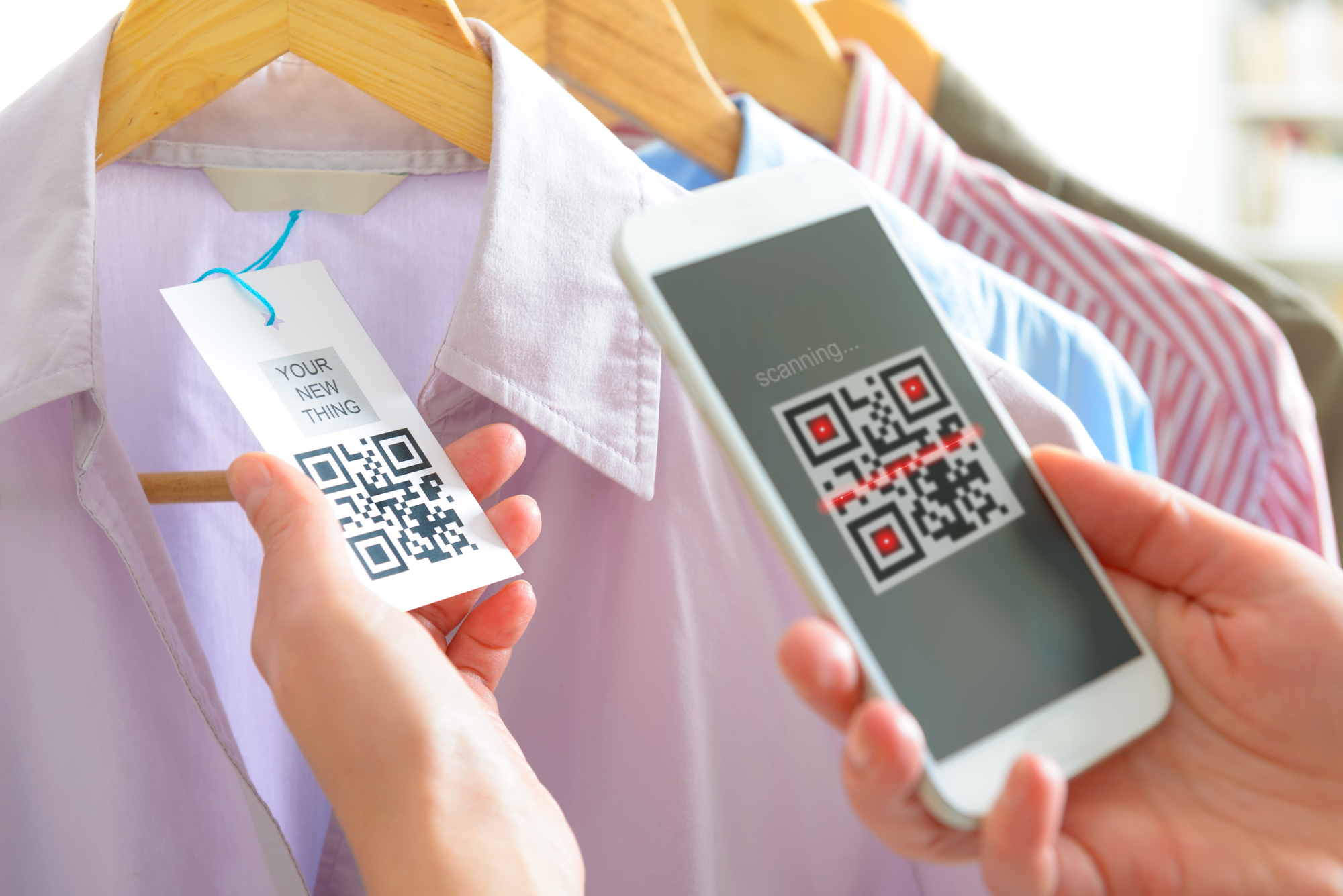
You’re probably already familiar with Quick Response codes or better known as QR codes as they are a part of our everyday life, popping up in restaurants, giving access to real-time traffic information at bus stops, providing specific information on food products, the list goes on.
With any modern phone you can just point the camera at a QR code and it will scan the code and take you immediately to a website that will share information relevant to the specific location and situation you are in.
While QR codes have been around for a while, according to eMarketer the number of QR code scans in the US has gone up about 60% since 2019 and is on its way to double by 2025.
But have you ever considered how your business could benefit from using them? If your organisation is running a Master Data Management (MDM) system like Stibo STEP, QR codes can unlock a wide range of opportunities.
At Unit of Measure we implement Master Data Management (MDM) systems and in this article, I want to highlight a few examples, where organisations running MDM systems such as Stibo STEP, could leverage their data and their MDM platform to support interesting use cases with QR codes.
The history of QR codes
QR codes were invented in 1994 by Masahiro Hara, a Japanese engineer working for Denso Wave, a subsidiary of Toyota. Initially designed to track automobile components during manufacturing, QR codes quickly gained popularity – especially in Asia - due to their ability to store more data than traditional barcodes and their ease of scanning.
Although it was clear to see a big potential for a broad range of applications, the big breakthrough in consumer adoption didn’t happen until the 2010s when QR codes became mainstream.
The introduction of native support for scanning QR codes in Android and iOS phone cameras, improved mobile internet capacity, and the impact of social distancing during the COVID-19 pandemic, have altogether sparked a high growth of QR code usage. With the pandemic behind us, it's now mobile payments that is fueling the growth and making QR code scanning an everyday occurrence for many consumers.

Use cases for QR codes that could be facilitated by your MDM system
But how can YOUR organisation take advantage of QR codes?
We have collected a few use cases for inspiration that could leverage the existing data in your PIM or MDM system:
Enhancing Printed Catalogues and Brochures
Incorporating QR codes into printed collateral like catalogues, brochures or other printed materials can significantly enrich the customer experience.
By scanning the QR code, customers can access detailed product information, reviews, or even instructional videos online. This added value not only helps customers make informed purchase decisions but also bridges the gap between physical and digital shopping experiences.
Moreover, the use of QR codes in catalogues and brochures can help businesses track and analyse the performance of their printed materials, enabling them to optimise marketing strategies based on customer engagement.
Read more: How can retailers make product data accessible on channels their customers use?
In-store Signage and Webstore Integration
QR codes on in-store signage can help customers find items in your webstore, making it easier for them to access product information and complete their purchase. This can also be useful for out-of-stock items, limited stock, or items with a variety of size and colour options.
By scanning the QR code, customers can quickly access the product's online listing and complete their purchase. This seamless integration between in-store and online shopping channels can improve customer satisfaction, act as a virtual shopping assistant and help businesses retain customers through a shorter, seamless customer journey.
Marketing and Advertising
QR codes can be a game-changer when it comes to marketing and advertising. By embedding QR codes in print ads, billboards, or product packaging, businesses can directly connect consumers to digital content like promotional videos, websites, or social media profiles.
This seamless integration helps increase customer engagement, brand awareness, and allows for targeted marketing strategies. Additionally, the use of QR codes in advertising can help measure the effectiveness of campaigns, providing valuable data on consumer behaviour and preferences.
Personalise the in-store shopping experience
If the customer enters a store and they are an existing account holder, QR codes can be used whilst shopping to add products to wish lists, make shopping recommendations based on past purchases, receive personalised discounts and maybe even support an augmented reality experience, where the customer could see how the product of interest would look together with other items.
Read more: How to use Stibo STEP to unlock value in the CPG sector
Streamlining Internal Business Processes
QR codes are not limited to customer-facing applications; they can also be used to streamline internal business processes.
By integrating QR codes into various aspects of business operations, such as employee training materials, internal documents, or equipment tracking, businesses can improve efficiency and reduce errors. For example, QR codes can be used to quickly access digital versions of important documents or link to instructional videos, simplifying the onboarding process for new employees.
Furthermore, attaching QR codes to company assets or equipment can help track and manage these resources more effectively, reducing losses and improving accountability.

Implementing QR codes in your MDM system
Once you have decided on the best uses for QR codes the next question will be how to implement this.
First, you need to establish to which degree your existing data model supports the use cases you are aiming for. There is a good chance that you will need to expand the data model a bit depending on the scenario, but if you already have a rich data model, a minor adjustment might be all you need.
If you manage both products AND customer data in your MDM system, you obviously have the best options of taking advantage of your existing data for some of the more sophisticated use cases listed above.
But even if you only manage for example product data in your MDM system, you’ll still have plenty of great opportunities to leverage QR codes.
If you already offer a rich set of information about your products on your website, it could simply be a matter of having a QR code available per product where the customer might look for your products in the physical world such as in-store signage, packaging or in a catalogue.
Best practice advice for the implementation
From my own experience, I have seen a number of successful implementations of QR codes supported in MDM systems over the years.
The implementations I came across worked but there was a tedious element to them because they were based on the QR codes getting generated outside the MDM system by special QR code creation applications and saved back to the system as image files linked to the product record.
This is not an ideal practice, since you suddenly have potentially tens of thousands of image files to manage and handle.
When my team and I were tasked to deliver a QR code solution for a department store retailer a few years ago, we wanted to avoid that approach and developed a native support for QR codes directly from Stibo STEP, which meant that we had full control of the QR code creation and only needed to generate it at the point of time of publishing the in-store signage and price signs.
This flexible approach to QR code creation also opens up many more uses cases, where you can easily support multiple different QR codes on the same product.
Maybe some that are optimised for different sales channels, maybe some that bundle different products together or maybe some that intersect product with customer data to create a personalised experience.
Ready to explore how QR codes can enhance your customer experience and streamline your operations? Get in touch with us to discuss the possibilities and take your business to the next level.
Book a free consultation and let’s explore how we can help you get the most from your MDM investments.